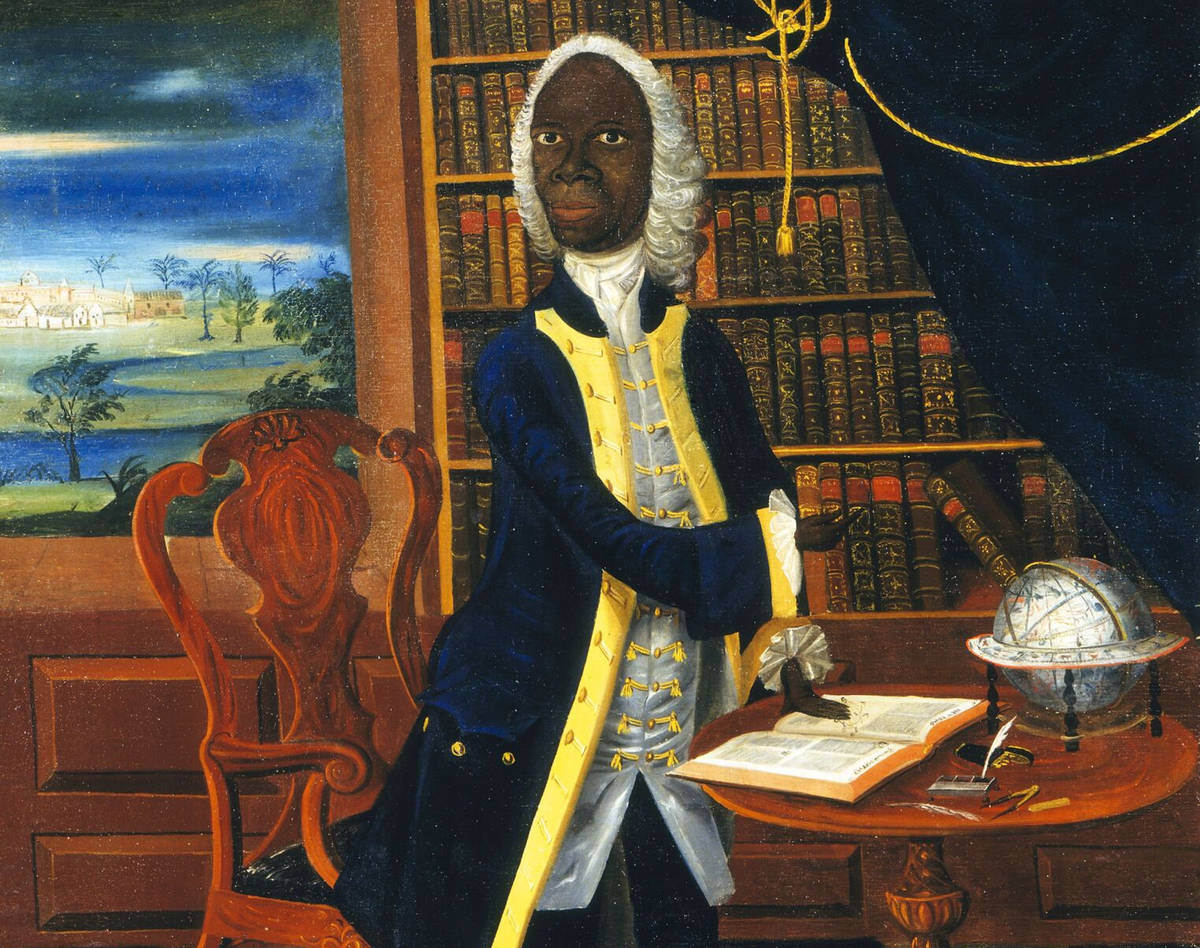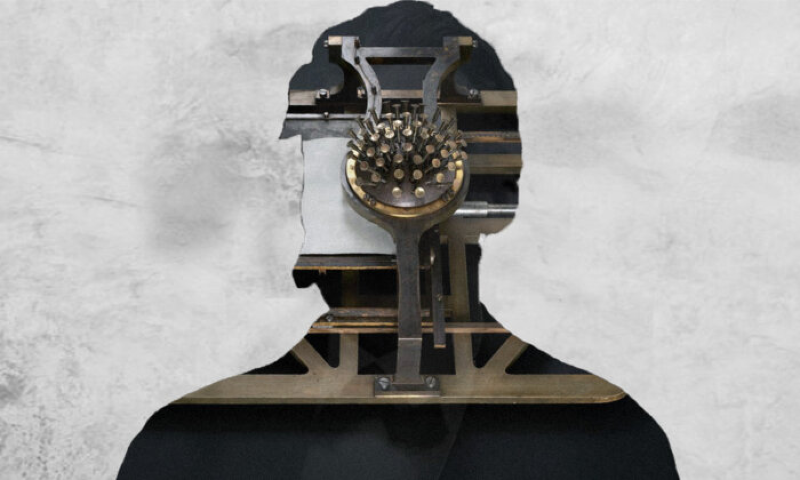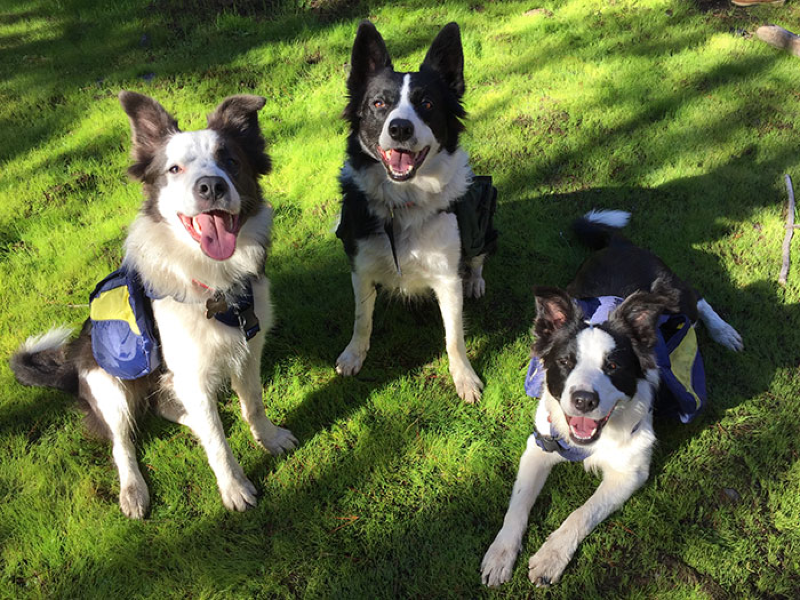This 1700s painting of a Black scholar has a secret

From the LRB: "In the autumn of 1928, a previously unknown painting turns up on the London art market. It belongs to a Major Henry Howard of Surrey. When Howard takes the painting to a London dealer, he explains that it had belonged to his great-great-great-grandfather, who had lived in Jamaica in the mid-18th century; that it was painted in Spanish Town, the colony’s capital; and that it showed a man called Francis Williams, who in his lifetime had been the most famous Black person in the world. He was rich; he was a gentleman; he was a scholar. No one has ever been able to discover who painted it, when, where or why. And then, a few months ago, everything changed and I found something completely unexpected."
Nietzsche's writing was influenced by his use of a unique typewriter

From MIT Press: "Nietzsche wrote four books between 1870 and 1881, or almost one every three years, which is pretty good. After 1881, however, he managed to deliver 10 manuscripts to his publisher in the seven years to 1888, whereupon he became too ill to write any longer. That was a book and a half per year, which is really good. By 1881 Nietzsche had become almost blind, an infirmity that would surely have hampered his longhand writing. How did he manage to improve his work rate? What he did was something seemingly out of character, given his views on modernity and science: He bought a typewriter. To be precise, he purchased a top-of-the-line portable Malling-Hansen writing ball, which was sent specially to him from its inventor in Copenhagen."
What 700 years of historical data can tell us about extreme weather

From Nautilus: "A few years ago, Valerie Trouet, a tree scientist from Belgium, began to notice something curious. When her summer holidays at home were marred by cold rainy days, countries like Greece and Italy in the Eastern Mediterranean appeared to be battling unseasonal droughts and heatwaves. Trouet started to wonder if the jet stream had anything to do with it, so she teamed up with historians and climate scientists and created a model for jet stream variability that extends the record by 700 years. By studying tree rings, Trouet and a team of experts produced a reconstruction of summer weather extremes for the period from 1300 to 2004 A.D. They then examined historical records to see how these weather patterns were reflected in records of storms, plagues, and harvests dating back to the Middle Ages."
Hi everyone! Mathew Ingram here. I am able to continue writing this newsletter in part because of your financial help and support, which you can do either through my Patreon or by upgrading your subscription to a monthly contribution. I enjoy gathering all of these links and sharing them with you, but it does take time, and your support makes it possible for me to do that. And I appreciate it, believe me!
With this recipe you can make author Leo Tolstoy's version of macaroni and cheese

From LitHub: "I haven’t actually prepared Leo Tolstoy’s family recipe for macaroni and cheese, but it involves only one cheese and something called vegetable sauce. The recipe comes from a cookbook that Tolstoy’s brother-in-law, Stepan Andreevich Bers, published and gifted to his sister, Tolstoy’s wife, Sophia Andreevna Tolstaya. The book was translated and adapted by Sergei Beltyukov a few years ago as Leo Tolstoy: A Vegetarian’s Tale: Tolstoy’s Family Vegetarian Recipes Adapted for the Modern Kitchen. Tolstoy became a vegetarian in the latter half of his life, and wrote that eating meat “is simply immoral, as it is called forth only by greediness and the desire for tasty food.”
How a trio of dogs helped reforest a landscape destroyed by forest fires

From Now I Know: "In 2017, a series of more than 5,000 wildfires tore through the forests of Chile, charring nearly 1.5 million acres. Today, because of two sisters and their three dogs, things are getting a little bit better. Sisters Francisca and Constanza Torres came up with the idea of using their three border collies — Das, Olivia, and Summer — to help with the reforestation efforts. The idea was simple. First, the sisters trained their dogs to run around the forest for hours at a time. Second, they outfitted the dogs with bags filled with seeds but with little holes in the bottom. The dogs then ran around the forest, spreading seeds as they went. And when they came back they got lots of treats."
Pet shop staffer made a device so a tortoise could scratch his shell
Tortoise shells have nerve endings and are sensitive to the slightest touch. This tortoise at Badger Run Wildlife Rehab loves to feel her shell scratched, so a kind volunteer made her a scratching device. pic.twitter.com/fFgrvsd9Ru
— Nature is Amazing ☘️ (@AMAZlNGNATURE) November 26, 2024
Acknowledgements: I find a lot of these links myself, but I also get some from other newsletters that I rely on as "serendipity engines," such as The Morning News from Rosecrans Baldwin and Andrew Womack, Jodi Ettenberg's Curious About Everything, Dan Lewis's Now I Know, Robert Cottrell and Caroline Crampton's The Browser, Clive Thompson's Linkfest, Noah Brier and Colin Nagy's Why Is This Interesting, Maria Popova's The Marginalian, Sheehan Quirke AKA The Cultural Tutor, the Smithsonian magazine, and JSTOR Daily. If you come across something interesting that you think should be included here, please feel free to email me at mathew @ mathewingram dot com



